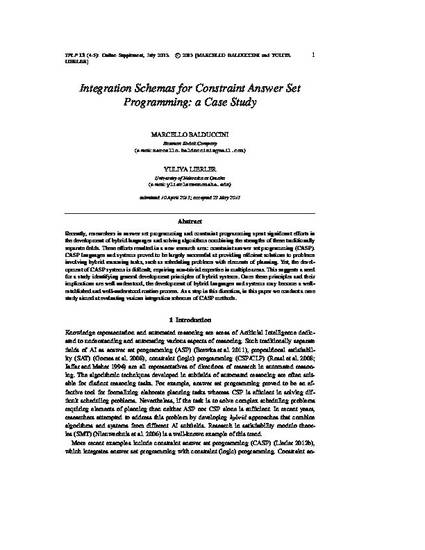
Recently, researchers in answer set programming and constraint programming spent significant efforts in the development of hybrid languages and solving algorithms combining the strengths of these traditionally separate fields. These efforts resulted in a new research area: constraint answer set programming (CASP). CASP languages and systems proved to be largely successful at providing efficient solutions to problems involving hybrid reasoning tasks, such as scheduling problems with elements of planning. Yet, the development of CASP systems is difficult, requiring non-trivial expertise in multiple areas. This suggests a need for a study identifying general development principles of hybrid systems. Once these principles and their implications are well understood, the development of hybrid languages and systems may become a wellestablished and well-understood routine process. As a step in this direction, in this paper we conduct a case study aimed at evaluating various integration schemas of CASP methods.
Available at: http://works.bepress.com/yuliya_lierler/40/

Balduccini, M., & LIERLER, Y. Integration Schemas for Constraint Answer Set Programming: a Case Study. Copyright © Cambridge University Press 2011. This journal can be found at http://journals.cambridge.org/action/displayJournal?jid=TLP.